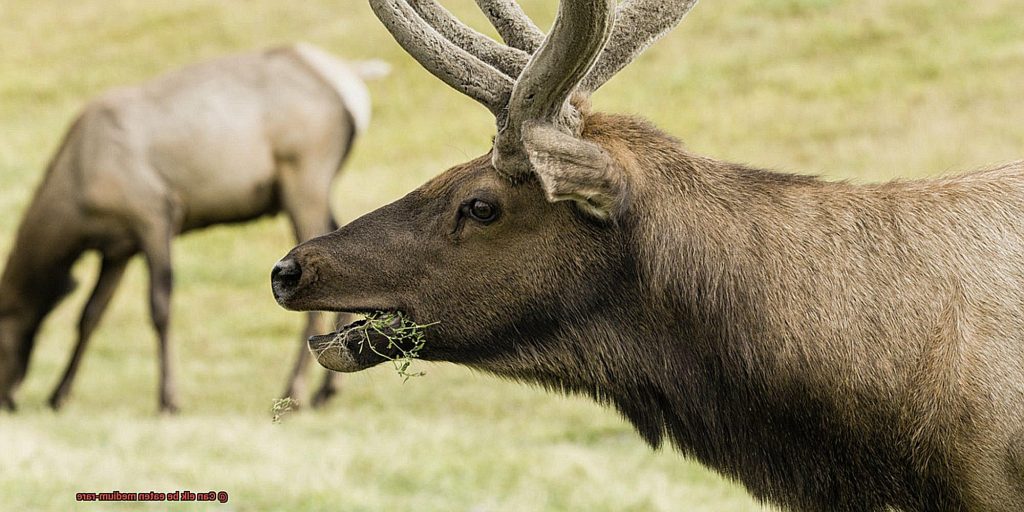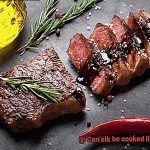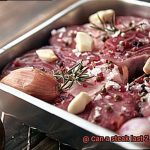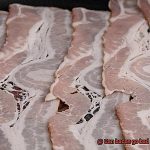Are you tired of the same old beef steak? Bored of the usual options and craving something bold and exciting? Well, my friend, it’s time to step up your game and give elk a try. This majestic creature not only roams the wild with grace but also offers a lean, tender, and downright delicious meat that will make your taste buds sing.
Now, here’s the million-dollar question: Can you enjoy elk medium-rare, just like a perfectly cooked juicy steak? Ah, the suspense. In this blog post, we’re about to embark on an epic adventure into the world of elk meat. We’ll uncover its safety levels and dive deep into its culinary wonders. So whether you’re a seasoned hunter or simply someone with an insatiable curiosity for all things food-related, buckle up and join us on this mouthwatering journey.
Prepare yourself for a feast of information as we explore the truth behind savoring elk meat at its finest. We’ll leave no stone unturned in our quest to discover if elk can indeed be devoured medium-rare. Get ready to tantalize your senses as we discuss cooking temperatures, flavor profiles, and everything in between.
So grab a seat at our virtual table and let’s dig into this topic together. It’s time to break free from the ordinary and embrace the extraordinary flavors that await us in every succulent bite of medium-rare elk. Trust me; your taste buds will thank you for it.
Contents
The Risk of Eating Elk Meat Medium-Rare
Eating elk meat medium-rare may seem like a tempting option for its tenderness and flavor, but it is important to understand the potential risks involved. One of the main concerns is the risk of bacterial contamination, particularly from pathogens such as E. coli and Salmonella. These bacteria can be present in the intestines of animals and can contaminate the meat during processing.
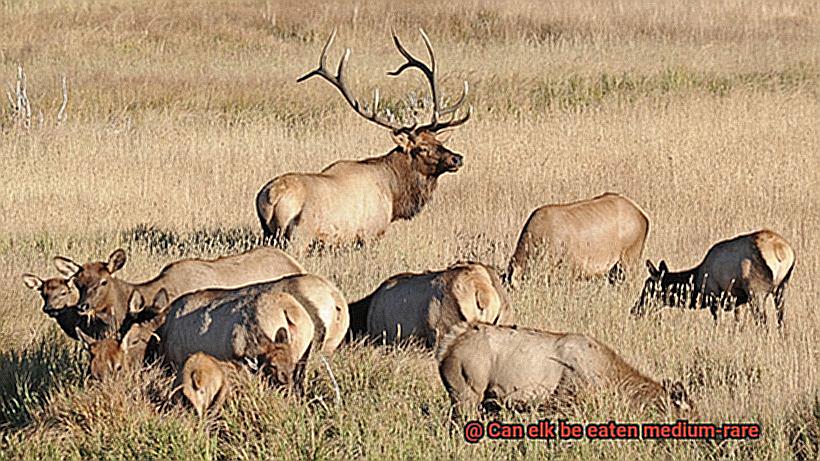
When elk meat is cooked to medium-rare or below, these bacteria may not be completely killed, posing a potential health risk. To ensure food safety, it is crucial to cook elk meat to a minimum internal temperature of 145°F (63°C). This temperature effectively kills harmful bacteria and reduces the risk of foodborne illnesses.
To accurately measure the internal temperature, it is essential to use a reliable meat thermometer. Proper sourcing, handling, and storage practices also play a significant role in reducing the risk of bacterial contamination. Purchasing elk meat from reputable suppliers who follow strict hygiene practices is recommended. Additionally, storing the meat at or below 40°F (4°C) helps prevent bacterial growth.
While marinating elk meat before cooking can help reduce bacterial contamination by inhibiting the growth of pathogens, it should not be relied upon as the sole safety measure. It is still essential to cook the meat to the recommended internal temperature.
It is important to note that individuals with compromised immune systems, young children, pregnant women, and the elderly are more susceptible to foodborne illnesses and should exercise extra caution when consuming medium-rare meats.
Sourcing Quality Elk Meat for Safe Consumption
Sourcing high-quality elk meat for safe consumption when grilling is of utmost importance. The quality of elk meat depends on various factors, such as the animal’s diet, living conditions, and processing methods. To ensure that the meat comes from animals raised ethically and sustainably, it is crucial to choose elk meat from reputable sources that prioritize these practices.
One way to ensure quality is by purchasing elk meat from certified suppliers. These suppliers adhere to strict regulations and standards, including regular inspections, proper handling and storage techniques, and adherence to food safety protocols. By choosing certified suppliers, you can reduce the risk of contamination and be confident in the quality of the meat.
Another option to consider is buying elk meat from local farms or ranches. Local farms often have more control over the entire production process, from raising the animals to processing the meat. This reduces the chances of contamination and allows for better traceability. Supporting local farms also promotes sustainability and strengthens the local economy.
Reputable online retailers specializing in game meats can also be a convenient option for sourcing quality elk meat. Look for online retailers that provide detailed information about their sourcing practices and customer reviews. Certifications or accreditations can further guarantee the safety and quality of their products.
Additionally, visiting local butcher shops that specialize in game meats is an excellent way to source high-quality elk meat. These establishments often have close relationships with hunters or trusted suppliers, ensuring responsible sourcing and proper handling of the meat. Butchers can also provide valuable advice on cooking elk meat to achieve desired levels of doneness.
When sourcing elk meat, it is important to look for labels indicating grass-fed or organic options, choose cuts that are well-marbled and free from excessive fat or blemishes, and opt for vacuum-sealed packaging to maintain freshness. Proper handling and storage of elk meat once it is purchased is also crucial. Keep the meat refrigerated at all times, separate from other foods, and consume it within a certain timeframe to ensure optimal freshness and safety.
Handling and Storing Elk Meat
To handle and store elk meat properly, there are several important steps to take.
- Hygiene: Before and after handling elk meat, wash your hands thoroughly with soap and warm water. This helps prevent the spread of bacteria and ensures a safe cooking process.
- Refrigeration: Elk meat should be stored in the refrigerator at a temperature of 40°F (4°C) or below. To prevent cross-contamination, tightly wrap the meat in plastic wrap or place it in a sealed container.
- Freezing: If you’re not going to use the elk meat within a few days, store it in the freezer. Use airtight freezer bags or wrap it tightly in freezer paper to avoid freezer burn.
- Thawing: When thawing frozen elk meat, do so safely. The best method is to thaw it in the refrigerator overnight. Alternatively, use the defrost setting on your microwave or submerge the meat in cold water, changing the water every 30 minutes until thawed.
- Prompt Cooking: Once elk meat is thawed, cook it promptly. Avoid refreezing thawed elk meat as this can affect its texture and quality.
- Safe Internal Temperature: When grilling elk meat medium-rare, ensure it reaches an internal temperature of at least 145°F (63°C). Use a food thermometer to check this.
- Special Considerations: Pregnant women, young children, older adults, and individuals with weakened immune systems should cook elk meat to at least a medium doneness for safety.
- Trust Your Instincts: If elk meat has an off smell, slimy texture, or unusual color, discard it to avoid foodborne illness.
Trimming Excess Fat for Flavor and Tenderness
Trimming excess fat from elk meat is a crucial step in enhancing its flavor and tenderness. When it comes to cooking elk meat, removing the visible fat not only improves the taste but also promotes better texture and tenderness.
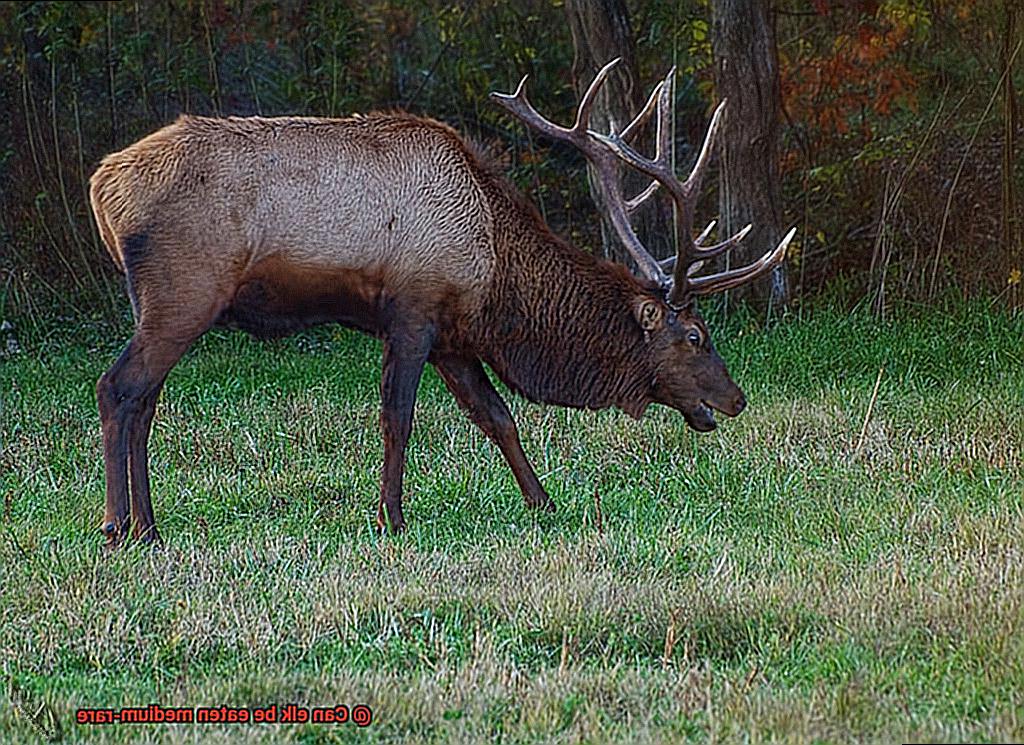
Excess fat in elk meat can contribute to a gamey flavor and make the meat tougher when cooked. By removing the visible fat, you can reduce the gaminess and enhance the natural flavors of the meat. Imagine sinking your teeth into a perfectly cooked elk steak, savoring the rich, earthy flavors without any overpowering gamey taste.
To trim excess fat from elk meat, start by inspecting the cuts of meat for any visible fat. Look for those large chunks or layers of fat that can be easily removed. Using a sharp knife, carefully trim away these fatty areas, being mindful not to remove too much of the lean meat. It’s like sculpting a masterpiece, carefully removing just enough to reveal the true beauty of the meat.
While it is recommended to leave a thin layer of fat on the meat to keep it moist during cooking, you have the freedom to tailor it to your preferences. If you prefer a leaner cut, you can trim off most of the fat. Just remember that without some fat, the meat may become drier when cooked. It’s all about finding that perfect balance between tenderness and moisture.
Trimming excess fat not only improves the flavor but also enhances the tenderness of elk meat. Fat acts as an insulator, preventing heat from penetrating the meat evenly. By removing excess fat, you allow the heat to reach every part of the meat more efficiently. Picture a perfectly tender and juicy piece of elk meat that melts in your mouth with each bite.
Additionally, excess fat can make the meat chewier and less enjoyable to eat. By trimming off the visible fat, you ensure a more pleasant eating experience. Every bite becomes a delightful journey, with the meat effortlessly breaking apart and melting in your mouth.
Reaching the Proper Internal Temperature with a Thermometer
Reaching the proper internal temperature when cooking elk is not just a matter of safety, but a quest for the ultimate flavor and texture. Cooking elk to medium-rare requires precision, and that’s where a reliable meat thermometer comes into play.
First and foremost, using a meat thermometer ensures the safety of your elk meat. It eliminates any guesswork and allows you to cook the meat to the correct temperature, killing off any potential bacteria that could cause harm.
But it’s not just about safety; it’s also about avoiding the dreaded overcooking. By using a meat thermometer, you can monitor the internal temperature of the elk and remove it from heat at the precise moment it reaches medium-rare. This means no more tough and dry meat – just tender, juicy perfection.
Consistency is another advantage of using a meat thermometer. Different cuts of elk vary in thickness, so relying solely on cooking times can lead to inconsistent results. With a thermometer, you can measure the internal temperature directly and achieve consistent doneness every time you cook elk.
Precision is key when it comes to cooking elk to medium-rare. A reliable meat thermometer gives you an accurate reading of the internal temperature, allowing you to have complete control over the cooking process. Whether you prefer your elk medium-rare or have another desired level of doneness, you can achieve it with precision using a meat thermometer.
To reach that perfect medium-rare level, follow these steps:
- Insert the meat thermometer into the thickest part of the elk cut, avoiding bone or fat deposits that could affect accuracy.
- Make sure the probe is properly inserted into the meat, reaching the center without touching any bone.
- Wait for a few seconds until the thermometer stabilizes and provides an accurate reading.
- Compare the internal temperature to the recommended range for medium-rare elk (around 135°F or 57°C). If it falls within this range, your elk is ready to be removed from heat and allowed to rest before serving.
Sealing in Juices with High Heat
Sealing in juices with high heat is a crucial technique when cooking elk, especially if you want to enjoy it medium-rare. Lean game meats like elk can easily become dry and tough if not cooked properly. However, with the right methods, you can retain moisture and achieve a perfectly juicy medium-rare elk steak.
One effective technique for sealing in juices is to use a two-step cooking process. Start by searing the elk over high heat to create a flavorful crust on the outside. This initial sear helps lock in the natural juices of the meat. Once the searing is done, reduce the heat to a medium temperature and continue cooking until the desired level of doneness is achieved.
Another important aspect of sealing in juices is allowing the elk to rest after cooking. Resting allows the meat’s juices to redistribute throughout the muscle fibers, resulting in a more tender and juicy final product. After removing the elk from the grill, tent it loosely with foil and let it rest for at least 5-10 minutes before slicing or serving.
Marinating the elk prior to grilling can also help in sealing in juices and adding flavor. A marinade not only enhances the taste but also acts as a barrier between the meat and high heat. The acidic components present in many marinades help break down tough proteins, making the meat more tender while keeping it moist.
To ensure that the elk reaches a safe internal temperature while still maintaining its desired level of doneness, use an instant-read meat thermometer. For medium-rare elk, the internal temperature should read around 130-135°F (55-57°C).
Resting the Cooked Meat for Optimal Flavor
Resting the cooked meat is not just a step in the cooking process; it’s an art that can elevate your dish to new heights of flavor and tenderness. Whether you’re cooking elk or any other type of meat, the concept remains the same. When meat is subjected to heat, the proteins contract, causing the juices to be forced towards the center of the cut. But fear not, for resting comes to the rescue.
During the resting period, it’s imperative to let the elk meat sit undisturbed for a specific duration. This allows the internal temperature to stabilize and for those precious juices to reabsorb into the muscle fibers. The exact resting time will depend on various factors such as the size and thickness of the cut, but as a general guideline, a few minutes up to 20 minutes should suffice.
But don’t just leave your meat exposed. Cover it loosely with aluminum foil or a clean kitchen towel. This serves two purposes: retaining heat and preventing excessive moisture loss. However, be cautious not to wrap it too tightly, as that can lead to unwanted condensation and soggy meat.
Now let’s talk about flavor evolution. As the elk meat cools slightly during resting, the flavors have a chance to meld together, creating a symphony of taste. This is especially crucial when cooking elk medium-rare because it allows the natural flavors of the meat to shine through without being overshadowed by excessive heat.
But wait, there’s more. Resting also allows any residual heat to continue its magic. It gently cooks the meat further, ensuring that it reaches a safe internal temperature without overcooking. And let’s not forget about moisture retention. Resting helps keep that precious juice within the meat, preventing dryness and guaranteeing a juicy and succulent eating experience.
It’s important to note that resting is not an excuse for additional cooking time. Resting does not significantly cook the meat further; rather, it allows for the redistribution of juices and flavors. Therefore, make sure your elk is cooked to the desired doneness before removing it from the heat source.
Individual Preferences for Doneness
When it comes to cooking elk meat, the individual preferences for doneness can be as diverse as the flavors of the meat itself. Doneness refers to the degree to which the meat is cooked, and it can range from rare to well-done. Each level of doneness offers a unique eating experience, and it ultimately depends on personal taste and desired texture.
First, let’s explore the medium-rare doneness. This is often considered the pinnacle of perfection when it comes to elk meat. Cooking the meat to medium-rare ensures that the center is pink and slightly juicy, creating a tender and flavorful bite. The rich flavors of the elk meat are preserved, making it an ideal choice for those who want to savor every exquisite note.
Moving on to rare doneness, we enter a realm of boldness and intensity. Rare elk meat is cooked until the center is red and very juicy. This cooking method enhances the gamey flavors of the meat, appealing to those who enjoy a more pronounced taste sensation. With each bite, you can feel the primal essence of the elk come alive.
For those who prefer a slightly more well-cooked meat but still want to retain some juiciness, medium doneness is the way to go. This level of doneness provides a firmer texture while maintaining a moderate amount of juiciness. It strikes a balance between tenderness and solidity, offering a delightful combination for those seeking a middle ground.
Finally, we have well-done doneness. If you prefer your meat thoroughly cooked, then this is your go-to option. Cooking elk meat to well-done ensures a firm texture with minimal juiciness. While some may find it less flavorful compared to other levels of doneness, well-done elk meat can still be enjoyed by those who appreciate its robustness and heartiness.
As you embark on your culinary journey with elk meat, it’s crucial to consider your personal preferences and cooking techniques. It’s also important to ensure that the elk meat reaches a safe internal temperature to prevent any potential foodborne illnesses. Using a meat thermometer is highly recommended to accurately determine the doneness and safety of your elk meat.
Conclusion
In conclusion, the answer to the question “Can elk be eaten medium-rare?” is a resounding yes. But hold on tight, because we’re about to dive into a tantalizing culinary experience that will leave your taste buds dancing with delight.
Picture this: a perfectly cooked piece of elk meat, its tender texture melting in your mouth, and its rich flavors bursting with every bite. It’s a feast fit for kings and queens of the food world. However, before you take that first succulent bite, let’s talk about the potential risks lurking beneath the surface.
When it comes to eating elk medium-rare, there’s a small but mighty enemy to watch out for: bacterial contamination. Pathogens like E. coli and Salmonella can wreak havoc on your digestive system if not properly handled. That’s why it’s crucial to cook elk meat to an internal temperature of at least 145°F (63°C). Don’t guess or rely on instinct; arm yourself with a trusty meat thermometer for precise measurements.
Now, let’s talk sourcing. To ensure safe consumption, it’s essential to obtain high-quality elk meat from reputable suppliers or local farms. These sources prioritize ethical practices and adhere to strict regulations and standards. So go ahead and do your homework – find those who have mastered the art of delivering top-notch elk meat straight to your plate.
But wait, there’s more. Proper handling and storage are vital steps in reducing the risk of bacterial contamination. Trim away excess fat from your prized cut of elk meat – not only will it enhance flavor and tenderness, but it’ll also help minimize any potential hazards lurking within.
Now comes the moment where flavors explode and juiciness reigns supreme – searing and resting the cooked meat. By applying high heat through searing, you’ll lock in those precious juices that make each bite burst with moisture and flavor. And don’t forget about letting your masterpiece rest before diving in. This crucial step allows the flavors to develop and mingle, creating a symphony of taste that will leave you craving more.
Remember, at the end of the day, it’s all about personal preference. Whether you like your elk meat medium-rare, rare, medium, or well-done, make sure it reaches a safe internal temperature while satisfying your culinary desires.

